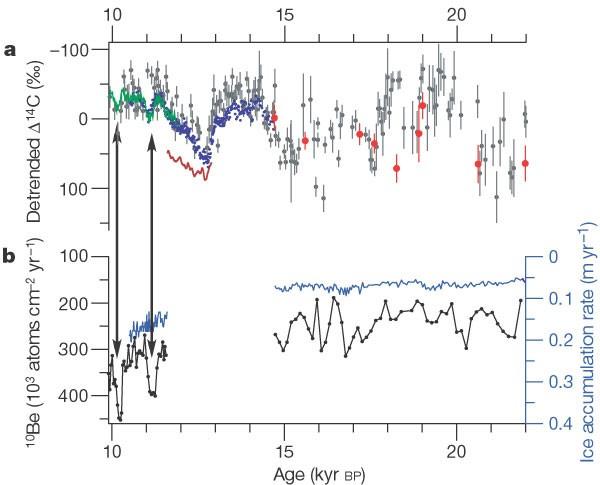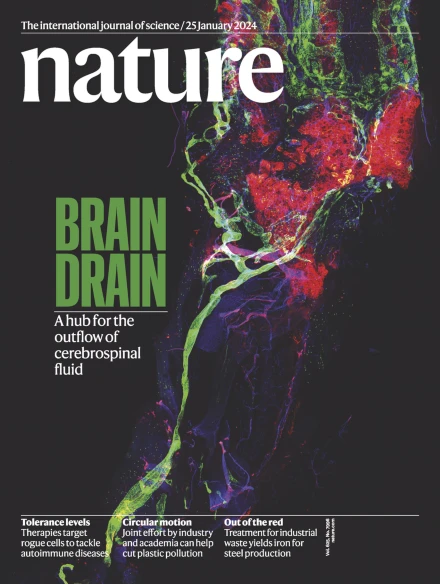The role of the thermohaline circulation in abrupt climate change
IF 48.5
1区 综合性期刊
Q1 MULTIDISCIPLINARY SCIENCES
引用次数: 834
Abstract
The possibility of a reduced Atlantic thermohaline circulation in response to increases in greenhouse-gas concentrations has been demonstrated in a number of simulations with general circulation models of the coupled ocean–atmosphere system. But it remains difficult to assess the likelihood of future changes in the thermohaline circulation, mainly owing to poorly constrained model parameterizations and uncertainties in the response of the climate system to greenhouse warming. Analyses of past abrupt climate changes help to solve these problems. Data and models both suggest that abrupt climate change during the last glaciation originated through changes in the Atlantic thermohaline circulation in response to small changes in the hydrological cycle. Atmospheric and oceanic responses to these changes were then transmitted globally through a number of feedbacks. The palaeoclimate data and the model results also indicate that the stability of the thermohaline circulation depends on the mean climate state.

温盐环流在气候突变中的作用
利用海洋-大气耦合系统的大环流模式进行的一些模拟已证明,随着温室气体浓度的增加,大西洋温盐环流有可能减弱。但是,主要由于模型参数约束不足以及气候系统对温室效应变暖的反应存在不确定性,评估未来温盐环流发生变化的可能性仍然十分困难。对过去气候突变的分析有助于解决这些问题。数据和模型都表明,上一次冰川期的气候突变起源于大西洋温盐环流对水文循环微小变化的响应。随后,大气和海洋对这些变化的反应通过一系列反馈作用传递到全球。古气候数据和模型结果还表明,温盐环流的稳定性取决于平均气候状态。
本文章由计算机程序翻译,如有差异,请以英文原文为准。
求助全文
约1分钟内获得全文
求助全文
来源期刊

Nature
综合性期刊-综合性期刊
CiteScore
90.00
自引率
1.20%
发文量
3652
审稿时长
3 months
期刊介绍:
Nature is a prestigious international journal that publishes peer-reviewed research in various scientific and technological fields. The selection of articles is based on criteria such as originality, importance, interdisciplinary relevance, timeliness, accessibility, elegance, and surprising conclusions. In addition to showcasing significant scientific advances, Nature delivers rapid, authoritative, insightful news, and interpretation of current and upcoming trends impacting science, scientists, and the broader public. The journal serves a dual purpose: firstly, to promptly share noteworthy scientific advances and foster discussions among scientists, and secondly, to ensure the swift dissemination of scientific results globally, emphasizing their significance for knowledge, culture, and daily life.
 求助内容:
求助内容: 应助结果提醒方式:
应助结果提醒方式:


